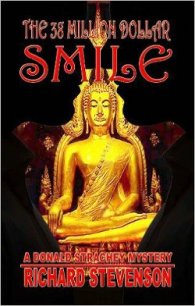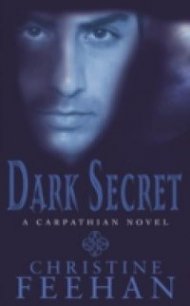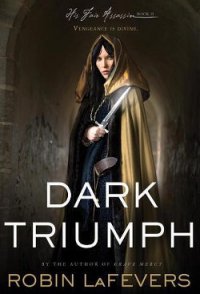Congo - Crichton Michael (книги регистрация онлайн бесплатно .TXT) 📗
3. DOD/ARPD/VULCAN 7021
IN 1978, MUNRO HAD LED A ZAMBIA EXPEDITION which included Robert Perry, a young geologist from the University of Hawaii. Perry had worked on PROJECT VULCAN, the most advanced program financed under the Department of Defense Advanced Research Project Division.
VULCAN was so controversial that during the 1975 House Armed Services Subcommittee hearings, project DOD/ ARPD/VULCAN 7021 was carefully buried among “miscellaneous long-term findings of national security significance.” But the following year, Congressman David Inaga (D., Hawaii) challenged DOD / AR PD/VULCAN. demanding to know “its exact military purpose, and why it should be funded entirely within the state of Hawaii.”
Pentagon spokesmen explained blandly that VULCAN was a “tsunami warning system” of value to the residents of the Hawaiian islands, as well as to military installations there. Pentagon experts reminded Inaga that in 1948 a tsunami had swept across the Pacific Ocean, first devastating Kauai, but moving so swiftly along the Hawaiian island chain that when it struck Oahu and Pearl Harbor twenty minutes later, no effective warning had been given.
“That tsunami was triggered by an underwater volcanic avalanche off the coast of Japan,” they said. “But Hawaii has its own active volcanoes, and now that Honolulu is a city of half a million, and naval presence is valued at more than thirty-five billion dollars, the ability to predict tsunami activity secondary to eruptions by Hawaiian volcanoes assumes major long-term significance.”
In truth, PROJECT VULCAN was not long-term at all; it was intended to be carried out at the next eruption of Mauna Loa, the largest active volcano in the world, located on the big island of Hawaii. The designated purpose of VULCAN was to control volcanic eruptions as they progressed; Mauna Lea was chosen because its eruptions were relatively mild and gentle.
Although it rose to an altitude of only 13,500 feet, Mauna Lea was the largest mountain in the world. Measured from its origin at the depths of the ocean floor, Mauna Loa had more than twice the cubic volume of Mount Everest; it was a unique and extraordinary geological formation. And Mauna Loa had long since become the most carefully studied volcano in history, having a permanent scientific observation station on its crater since 1928. It was also the most interfered-with volcano in history, since the lava that flowed down its slopes at three-year intervals had been diverted by everything from aerial bombers to local crews with shovels and sandbags.
VULCAN intended to alter the course of a Mauna Loa eruption by “venting” the giant volcano, releasing the enormous quantities of molten magma by a series of timed, non-nuclear explosions detonated along fault lines in the shield. In October, 1978, VULCAN was carried out in secret, using navy helicopter teams experienced in detonating high-explosive resonant conic charges. The VULCAN project lasted two days; on the third day, the civilian Mauna Lea Volcanic Laboratory publicly announced that “the October eruption of Mauna Lea has been milder than anticipated, and no further eruptive episodes are expected.”
PROJECT VULCAN was secret but Munro had heard all about it one drunken night around the campfire near Bangazi. And he remembered it now as Ross was planning a resonant explosive sequence in the region of a volcano in its eruptive phase. The basic tenet of VULCAN was that enormous, pent-up geological forces-whether the forces of an earthquake, or a volcano, or a Pacific typhoon-could be devastatingly unleashed by a relatively small energy trigger.
Ross prepared to fire her conical explosives.
“I think,” Munro said, “that you should try again to contact Houston.”
“That’s not possible,” Ross said, supremely confident. “I’m required to decide on my own-and I’ve decided to assess the extent of diamond deposits in the hillsides now.”
As the argument continued, Amy moved away. She picked up the detonating device lying alongside Ross’s pack. It was a tiny handheld device with six glowing LEDs, more than enough to fascinate Amy. She raised her fingers to push the buttons.
Karen Ross looked over. “Oh God.”
Munro turned. “Amy,” he said softly. “Amy, no. No. Amy no good.”
Amy good gorilla Amy good.
Amy held the detonating device in her hand. She was captivated by the winking LEDS. She glanced over at the humans.
“No, Amy,” Munro said. He turned to Elliot. “Can’t you stop leer?”
“Oh, what the hell,” Ross said. “Go ahead, Amy.”
A series of rumbling explosions blasted gleaming diamond dust from the mine shafts, and then there was silence. “Well,” Ross said finally, “I hope you’re satisfied. It’s perfectly clear that such a minimal explosive charge could not affect the volcano. In the future you can leave the scientific aspects to me, and-”
And then Mukenko rumbled, and the earth shook so hard that they were all knocked to the ground.
4: ERTS Houston
AT 1 A.M. HOUSTON TIME, R. B. TRAVIS FROWNED at the computer monitor in his office. He had just received the latest photosphere imagery from Kitt Peak Observatory, via GSFC telemetry. GSFC had kept him waiting all day fur the data, which was only one of several reasons why Travis was in a bad humor.
The photospheric imagery was negative-the sphere of the sun appeared black on the screen, with a glowing white chain of sunspots. There were at least fifteen major sunspots across the sphere, one of which originated the massive solar flare that was making his life hell.
For two days now, Travis had been sleeping at ERTS. The entire operation had gone to hell. ERTS had a team in northern Pakistan, not far from the troubled Afghan border, another in central Malaysia, in an area of Communist insurrection; and the Congo team, which was facing rebelling natives and some unknown group of gorilla-like creatures.
Communications with all teams around the world had been cut off by the solar flare for more than twenty-four hours. Travis had been running computer simulations on all of them with six-hour updates. The results did not please him. The Pakistan team was probably all right, but would run six days over schedule and cost them an additional two hundred thousand dollars; the Malaysia team was in serious jeopardy; and the Congo team was classified CANNY-ERTS computer slang fur “can not estimate.” Travis had had two CANNY teams in the past-in the Amazon in 1976, and in Sri Lanka in 1978- and he had lost people from both groups.
Things were going badly. Yet this latest GSFC was much better than the previous report. They had-it seemed- managed a brief transmission contact with the Congo several hours earlier, although there was no verification response from Ross. He wondered whether the team had received the warning or not. He stared at the black sphere with frustration.
Richards, one of the main data programmers, stuck his head in the door. “I have something relevant to the CFS.”
“Fire away,” Travis said. Any news relevant to the Congo Field Survey was of interest.
“The South African seismological Station at the University of Jo’burg reports tremors initiating at twelve oh four P.M. local time. Estimated epicenter coordinates are consistent with Mount Mukenko in the Virunga chain. The tremors are multiple, running Richter five to eight.”
“Any confirmation?” Travis asked.
“Nairobi is the nearest station, and they’re computing a Richter six to nine, or a Morelli Nine, with heavy downfall of ejecta from the cone. They are also predicting that the LAC, the local atmospheric conditions, are conducive to severe electrical discharges.”
Travis glanced at his watch. “Twelve oh four local time is nearly an hour ago,” he said. “Why wasn’t I informed?”


![[Magazine 1968-012] - The Million Monsters Affair - Davis Robert Hart (серия книг .txt) 📗](/uploads/posts/books/56864/56864.jpg)

